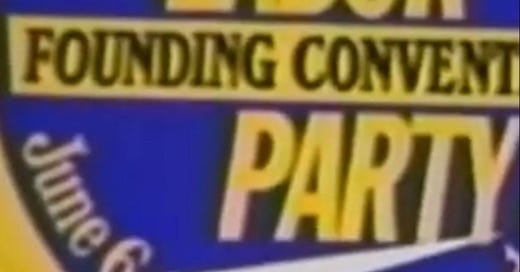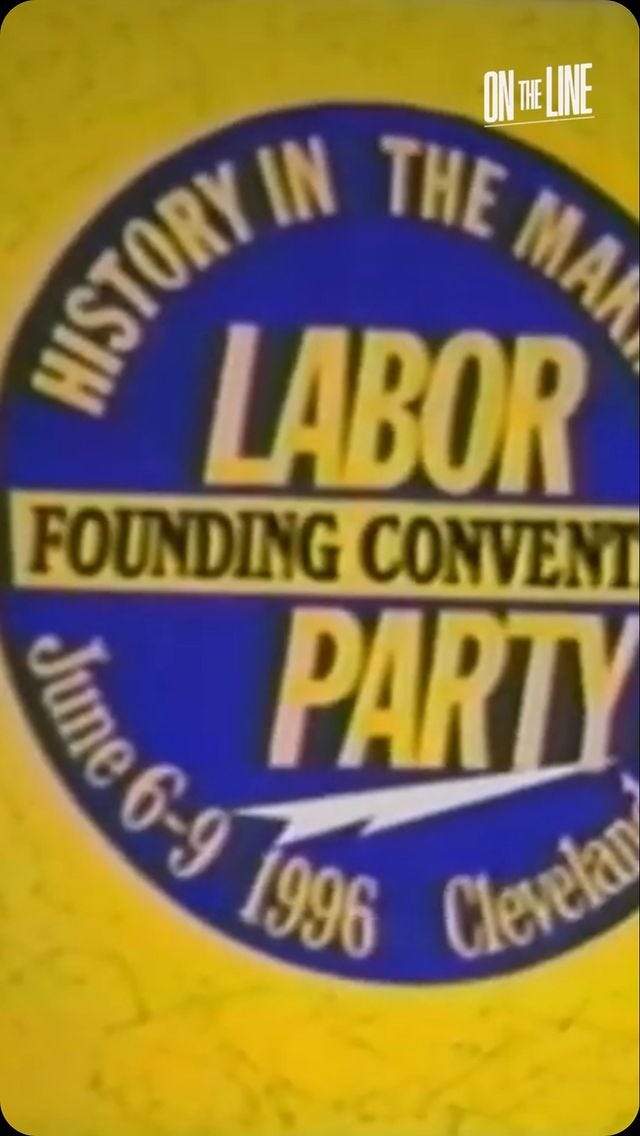VIDEO: Why Doesn’t the US have a Labor Party?
“The bosses have two parties. We need one of our own.” – That was the slogan of the Labor Party in the US that was formed in the 1990s… but what happened to them? The Labor Party was founded explicitly to represent the interests of working people with a foundation of power in unions and the labor movement.
These types of parties are a super common feature in just about every democracy across the world. As unions build power for working people on the job, worker’s political ambitions naturally go beyond what we can win in a single contract or workplace. As stronger unions began to make political demands – like the 8 hour day, child labor laws, minimum wage standards, healthcare, and retirement – it’s only natural to form a political party that can serve as a vehicle for working people to fight for that type of agenda.
And yet, the US doesn’t have a labor party today… but that doesn’t mean unions haven’t tried. Let’s look at the most recent attempt in the 1990’s. The Labor Party was the brainchild of one of the 20th century’s most progressive labor leaders – Tony Mazzocchi, long time leader of the Oil, Chemical and Atomic Workers International Union.
Mazzocchi joined the labor movement after serving in the army in WWII, working in a chemical plant. He quickly developed leadership as a fighter for his coworkers, beginning as a steward and then rising in elected union leadership. Over his many decades in the labor movement, he would call for greater political organization by unions and workers for key progressive causes. He worked tirelessly to build ties between unions and both the civil rights movement and the environmental justice movement. He even built organized labor opposition to the Vietnam war and nuclear proliferation. Perhaps his crowning achievement, Mazzocchi lead a grassroots movement for health and safety protections on the job – leading to the creation of OSHA.
After decades of leadership in the labor movement, Mazzocchi saw a new threat against organized labor and the interests of all working people brewing in the 1970’s. Over the decade, both parties would fully adopt an agenda to slash both government regulation and oversight of corporate America and simultaneously shred the social safety net won through major struggle.
After Reagan took office in 1981, he shocked the country by firing 11,000 striking airtraffic controllers during the PATCO strike. The AFL-CIO responded soon after with a mass rally to protest this attempt by Reagan to completely bust the union. At the rally, hundreds of thousands of workers were prepared to march on the airport and shut down all air travel until the workers were reinstated and their demands met! However, the AFL-CIO leadership worried this move would risk their relationship with the Democrats, and so instead blocked this action and effectively surrendered to the new era of union busting.
From then on, Mazzocchi saw there was only one path forward for a working class political agenda – an independent labor party! Finally, in 1996, the Labor Party formed after 1,500 unionists gathered for the founding convention, including delegates from chemical workers, nurses, longshoreman, electrical manufacturing, migrant farm workers, and more. The new slogan of the labor party said it all – “The bosses have two parties. We need one of our own.”
From then on, the Labor Party set out to build a base of political power among unionized workers and set out a bold agenda in the interests of working people – including guaranteed employment with a living wage, quality public education and free higher education, universal healthcare including full guarantee of reproductive rights, affordable childcare and eldercare, guaranteed pensions, a 32 hour work week, no more tax giveaways to corporations, and worker control over the introduction of new technology on the job.
While many of these policies were popular and the ranks of the new party initially grew, the labor party felt they did not have a large enough base to contest elections and thus never ran candidates. The pull of endorsing the Democrats under the threat of a frontal assault on labor by the Republicans was too great for many major unions to overcome every 4 years.
The leadership of a declining labor movement, accustomed to being a tail to the kite of the Democratic party, stuck with them, thinking they were their only real chance to survive. Without these key unions joining the Labor Party, it would remain a marginal political force struggling to expand.
After the 2000 presidential election brought Bush into the White House, the Democrats and their media apparatus blamed their loss primarily on 3rd party candidates, especially Ralph Nader, instead of seriously interrogating their failure to build broad political support for their candidate and advance a genuine working-class program. This line then became a standard among liberals, essentially blaming 3rd parties for the country’s continued shift to the right. This became the nail in the coffin of the fledgling political project, and meant that unions found themselves once again tied at the hip to the Democrats with very little to show for it beyond unfulfilled promises, such as the Employee Free Choice Act and the PRO Act.
Even though the Labor Party is gone, the need for independent working class politics is still here today, and the possibilities are expanding with a stronger and more confident labor movement. Major unions today are beginning to question if their connection to the Democratic Party may be more of a leash than a lifeline, one used to stop militant action from disrupting business as usual or the expression of an independent political perspective.
The only way the labor movement can grow beyond the golden cage of the Democratic party is by putting forward an independent working class political agenda, one that truly represents the interests of all working people and offers a new vision for change.





